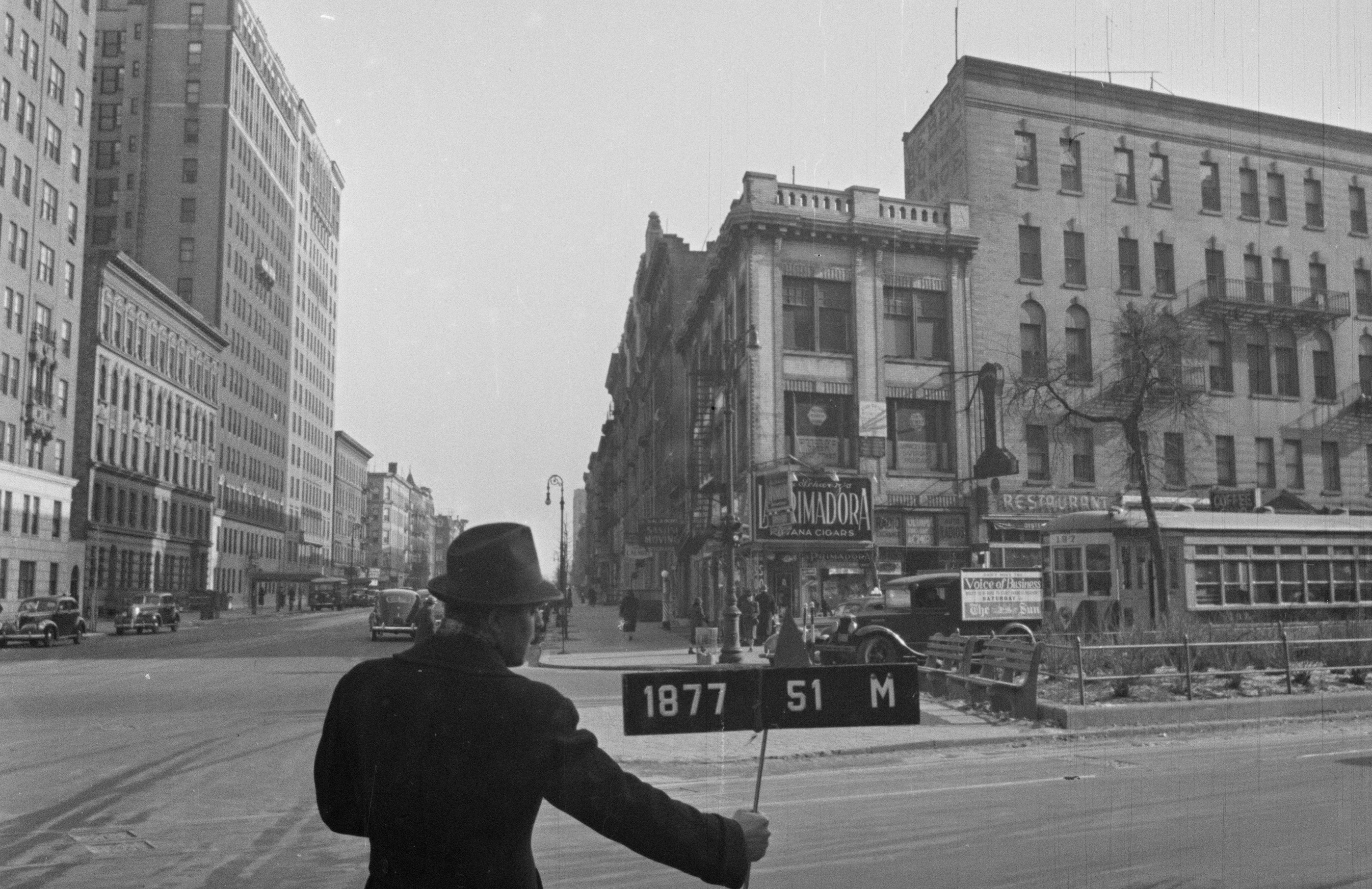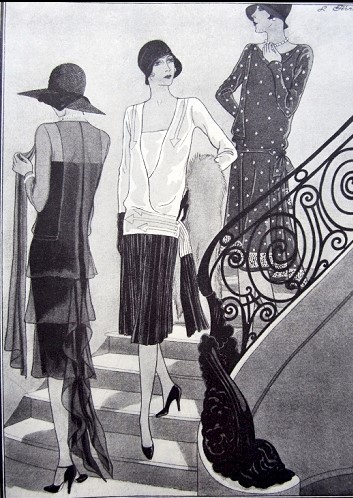
2758 Broadway
by Tom Miller
In April 1901, architect William J. Fryer filed plans for a seven-story brick apartment building on the southeast corner of Broadway and 106th Street for real estate operator and builder Samuel McMillan. At 28-feet-wide on Broadway and 74-feet long, the vacant site was just over the size of a large residential plot. Nearly a year later, in January 1902, the Real Estate Record & Guide noted that the project was “not started.”
In fact, it would be another 12 years before McMillan broke ground. And the resultant structure had been greatly scaled down. Instead of a multi-level apartment house, McMillan erected a three-story store-and-loft building. Designed in the Arts & Crafts style, its architectural elements were executed entirely in tan and yellow brick. A pierced brick parapet crowned the bracketed cornice.
The building was completed in 1915 and Samuel McMillan moved his real estate offices in. The ground floor store was leased to B. Cutler “as a ladies’ dress shop,” according to The New York Times, on October 6 that year. The venture did not work out, and the following year The Upholsterer reported, “I. Mayers has opened an upholstering and decorating shop at 2758 Broadway, New York.”
Mayers was more successful than B. Cutler, but four years after moving in, he was seriously disgruntled with the rent McMillan was charging. He wrote a letter to the Mayor’s Committee on Rent Profiteering in June 1919. The Syracuse Journal reported, “During the first three years, he said, he paid $900 a year rent. Last year his rent was $1,080, and he has just received notice that his rent, beginning Sept. 1, will be $2,500 a year.”
It was the scene of the meetings of the Friends of the Irish Republic that year.
In the meantime, the Frances Clyne dressmaking firm occupied the third floor. The high-end company added staff in the spring of 1920. Its advertisement sought, “Dressmakers and finishers, those accustomed to high-class work only; good pay, steady position.” And in December that year, it was looking for a Size 16 model, “Those having had experience in the highest class 5th Av. or 57th St. houses; highest salary paid to those qualifying.”
The newly incorporated Bolandi Beading Machines Corporation moved into the building in 1922. Headed by Raphael Bolandi, the firm manufactured “special machinery and parts.”
A major change came around 1937 when one of the loft spaces was converted to a vast meeting room, called the Community Center. It was the scene of the meetings of the Friends of the Irish Republic that year.
Early in 1938, the second loft space was transformed into a Communist social and meeting hall. On February 24 the Socialist newspaper the Daily Worker reported, “One of the most beloved figures of the revolutionary movement, Fred Ellis, will be honored by his comrades of the James Connolly Branch of the Communist Party at their large hall at 250 West 106th St., New York, Saturday night, Feb. 28.” The newspaper called Ellis “an outstanding proletarian artist” and said his work was known “to hundreds of thousands throughout the United States, and also in the Soviet Union, where he spent a number of years.”
Joseph Starobin, associate editor of the New Masses and “a leader of the youth movement in the United States,” according to the Daily Worker, initiated a series of lectures began on October 29, 1939. That night he spoke that night on “The War and the American People.”
It appeared that the end of the line for the little building was near in November 1944 when the Union Dime Savings Bank sold all six buildings on Broadway from 105th to 106th Street in foreclosure. But, possibly because male construction workers were off fighting in the war, the buildings survived.
In the 1960’s the store was home to Ibero American Books, and the former Communist hall was occupied by the Riverside Democratic Club. On February 20, 1964, the first of a series of public meetings was held here. That night Adolph A. Berle, Jr., the former chairman of President John F. Kennedy’s Special Task Force on Latin American Policy and Gonzalo J. Facio, Ambassador to Costa Rica, spoke on the issue, “Can Democracy Survive in Latin America?”
In 1972 the Community Center, recently renamed the Community Loft, became home to the West Side Branch of the Metropolitan Council on Housing. Here, explained the N. Y. Amsterdam News on July 22, “experienced organizers from Met Council” and the city-wide tenant would be available “to help tenants with housing problems.”
In the 1960’s the store was home to Ibero American Books, and the former Communist hall was occupied by the Riverside Democratic Club.
Before long, the West Side Branch of the Metropolitan Council on Housing was simplified to the Columbia Tenants Council. In December 1976 the two loft tenants moved in together. The New York Times reported, “One of the original reform clubs in the city, the Riverside Democratic Club on the West Side…has had to give up its club-house and has begun to share quarters with the Columbia Tenants Council at 250 West 106th Street to cut costs.”
Workers for tenants’ rights were not popular with many landlords. The situation came to a tragic end for the head of the Columbia Tenants Council, Bruce Bailey, in June 1989. He left home to attend a tenants’ meeting on West 125th Street, but never returned. The following evening a passerby discovered four large plastic bags along the roadside. Inside were a decapitated torso, two arms without hands and two legs without feet. Nellie Hester could only identify her husband by a birthmark and a scar on his right knee. The New York Times journalist H. Eric Semler commented on June 21, “As head of the Columbia Tenants Union he assisted thousands of tenants and often drew the wrath of landlords, drug dealers and even some of his closest colleagues.”
At the turn of the century the Apine Sound Store occupied the ground floor, replaced in 2015 by the Italian-American restaurant Macchina in 2015. The upper floors are home to a fitness club.
Tom Miller is a social historian and blogger at daytoninmanhattan.blogspot.com
Building Database
Keep Exploring
Be a part of history!
Think Local First to support the businesses at 2758 Broadway:
Meet Leslie Harriman!



